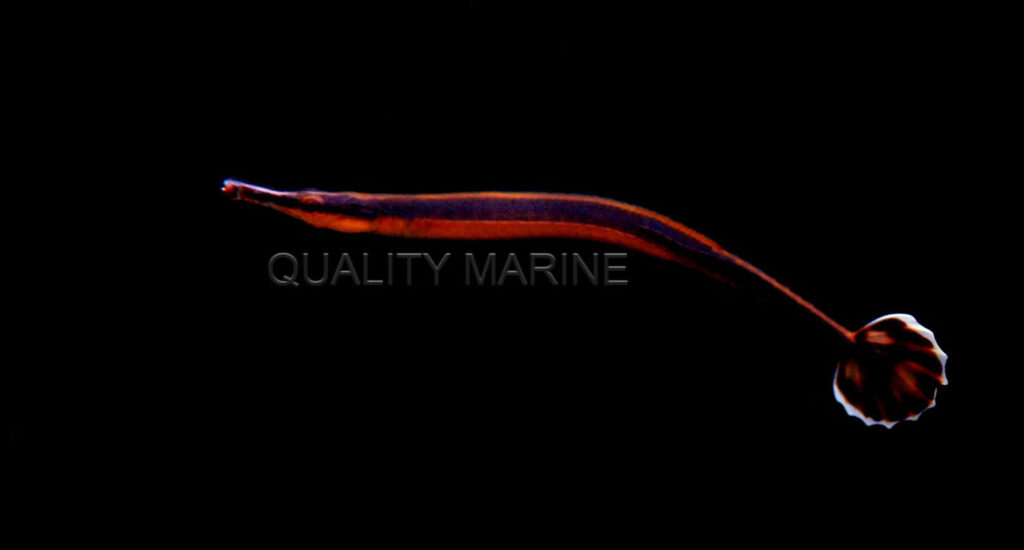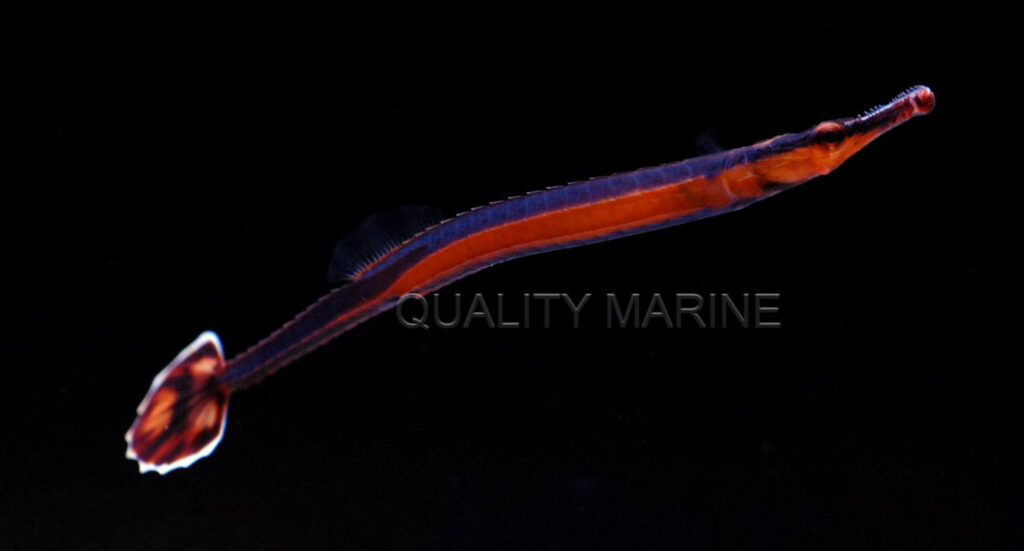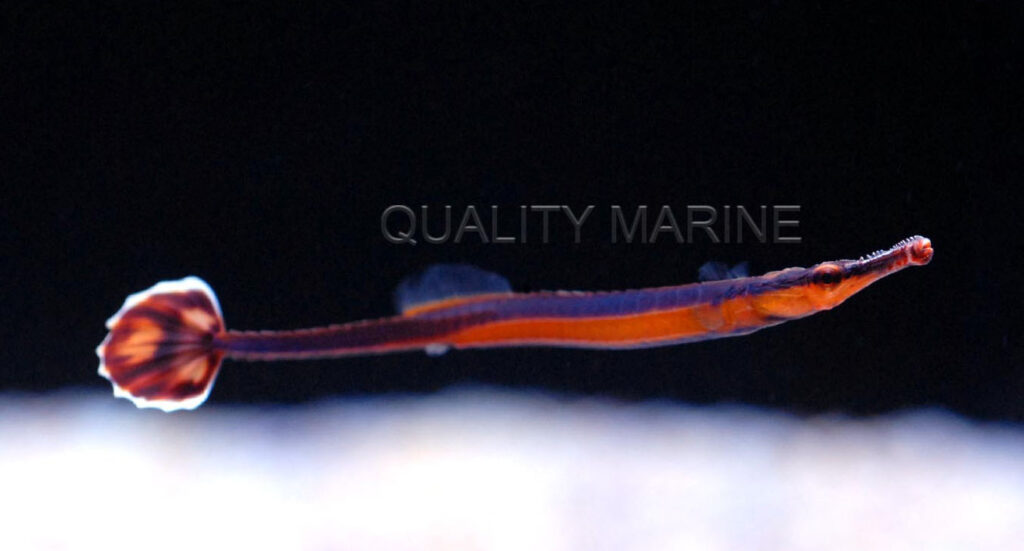
Captive-bred Coryrhamphus excisus, the Bluestripe Pipefish, make a debut at Quality Marine this week.
via Quality Marine
Quality Marine is proud to announce the arrival of yet another new aquacultured species: the Bluestripe Pipefish (Doryrhamphus excisus). Their unique appearance and useful predatory habits, combined with a vibrant blue and orange coloration, have made them a popular aquarium species, especially for seahorse and low-nutrient SPS aquariums. At Quality Marine, we believe strongly that aquaculture and short supply chains are essential for the long-term viability of our trade and for the health of our oceans, making this successful captive breeding all the more important.
In the wild, Bluestripe Pipefish inhabit rocky crevices in lagoons and reefs of depths from 2 to 45 meters all throughout the waters of the Indo-Pacific and Eastern Pacific. They feed primarily on planktonic organisms and small crustaceans. Much like seahorses, Bluestripe Pipefish are ovoviviparous, meaning the males carry the eggs in a brood pouch, which is found under their tail.
In aquariums, pipefish make excellent tankmates for seahorses, dragonets, and other peaceful, slow-moving species. Bluestripe Pipefish are one of the hardiest pipefish, and choosing aquacultured specimens increases your chance of success even more. Cultured pipefish are raised on prepared, often frozen meaty foods, eliminating the old requirement of offering live foods for successful husbandry. Their exceptionally small mouths will require you to feed nutrient-dense items with a smaller size, like Nutramar Ova (prawn eggs 1/16-inch in diameter).
Doryrhampus are extremely unlikely to be a problem with your corals and other inverts; however, they are plodding swimmers and somewhat small, so they could easily become a meal for anemones and aggressive corals.
Culturing anything takes time and resources, and continued industry support is the only way that these facilities will continue to grow, become more efficient, and offer even wider varieties of specimens. Quality Marine has supported these aquaculture efforts for decades now, and will continue to offer the best and widest variety of aquacultured specimens anywhere. We are very proud to now offer the Bluestripe Pipefish to our ever-growing list of captive-bred species.

Commercially-available captive-bred Bluestripe Pipefish, Doryrhamphus excisus, are available through Quality Marine now.
###






It warms my heart to see this!